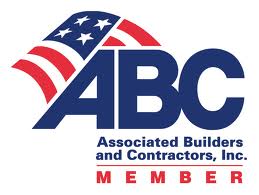Stellar, an architecture, engineering, construction and mechanical services firm, has earned the Associated Builders and Contractors' (ABC) highest national safety designation for 2011-the Safety Training Evaluation Process (STEP) Diamond-level award. Stellar was the only contractor in the Florida First Coast Chapter (with more than 140 member companies), and one of only four in Florida, to earn Diamond status.
There are six levels of STEP achievement: Participant, Bronze, Silver, Gold, Platinum, and Diamond. Member companies that achieve Diamond status-a new level established just last year-are an elite group. More than 2,100 ABC contractor members applied for the STEP program in 2011, with just 94 members achieving STEP Diamond status.
"Our most important goal is to send our employees and subcontractors home safe to their families, every day," said Philip Hinrichs, Stellar's Vice President of Risk Management. "That's why we develop a job-specific safety plan for each and every project and perform safety audits on a regular basis. We're proud to see these efforts recognized."
Stellar has achieved STEP certification 16 years in a row. Now widely accepted as the construction industry's standard measure of safety performance, the STEP awards were established in 1989 to evaluate and improve safety practices and recognize outstanding safety efforts. The award criteria include two industry benchmarks-the experience modification rate (EMR), which is applied to workers' compensation premiums, and the Occupational Safety and Health Administration's (OSHA) recordable injury and illness incidence rates (measured by the number of incidents per 100 employees per year).
STEP Diamond recipients must have long-term records of exceptional safety performance, with EMRs at or below 0.7 (a significantly lower rate than the national average of 1.0) and average incidence rates at least 50 percent below construction industry averages. EMRs, developed by the insurance industry, are based on comparisons of firms doing similar types of work. Lower rates, meaning that fewer or less-severe accidents occurred, result in lower insurance costs. BD+C
Related Stories
| Nov 27, 2013
Exclusive survey: Revenues increased at nearly half of AEC firms in 2013
Forty-six percent of the respondents to an exclusive BD+C survey of AEC professionals reported that revenues had increased this year compared to 2012, with another 24.2% saying cash flow had stayed the same.
| Nov 27, 2013
Wonder walls: 13 choices for the building envelope
BD+C editors present a roundup of the latest technologies and applications in exterior wall systems, from a tapered metal wall installation in Oklahoma to a textured precast concrete solution in North Carolina.
| Nov 27, 2013
University reconstruction projects: The 5 keys to success
This AIA CES Discovery course discusses the environmental, economic, and market pressures affecting facility planning for universities and colleges, and outlines current approaches to renovations for critical academic spaces.
| Nov 26, 2013
7 ways to make your firm more successful
Like all professional services businesses, AEC firms are challenged to effectively manage people. And even though people can be rather unpredictable, a firm’s success doesn’t have to be. Here are seven ways to make your firm more successful in the face of market variability and uncertainty.
| Nov 26, 2013
Design-build downsized: Applying the design-build method in an era of smaller projects
Any project can benefit from the collaborative spirit and cooperative relationships embodied by design-build. But is there a point of diminishing return where the design-build project delivery model just doesn't make sense for small projects? Design-build expert Lisa Cooley debates the issue.
| Nov 25, 2013
Electronic plan review: Coming soon to a city near you?
With all the effort AEC professionals put into leveraging technology to communicate digitally on projects, it is a shame that there is often one major road block that becomes the paper in their otherwise “paperless” project: the local city planning and permitting department.
| Nov 22, 2013
Kieran Timberlake, PE International develop BIM tool for green building life cycle assessment
Kieran Timberlake and PE International have developed Tally, an analysis tool to help BIM users keep better score of their projects’ complete environmental footprints.
| Nov 20, 2013
Architecture Billings Index slows in October; project inquiries stay strong
Following three months of accelerating demand for design services, the Architecture Billings Index reflected a somewhat slower pace of growth in October. The October ABI score was 51.6, down from a mark of 54.3 in September.
| Nov 19, 2013
Pediatric design in an adult hospital setting
Freestanding pediatric facilities have operational and physical characteristics that differ from those of adult facilities.
| Nov 18, 2013
6 checkpoints when designing a pediatric healthcare unit
As more time and money is devoted to neonatal and pediatric research, evidence-based design is playing an increasingly crucial role in the development of healthcare facilities for children. Here are six important factors AEC firms should consider when designing pediatric healthcare facilities.
















